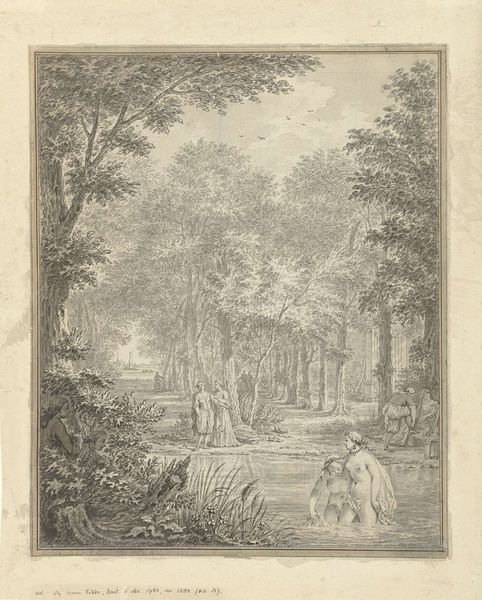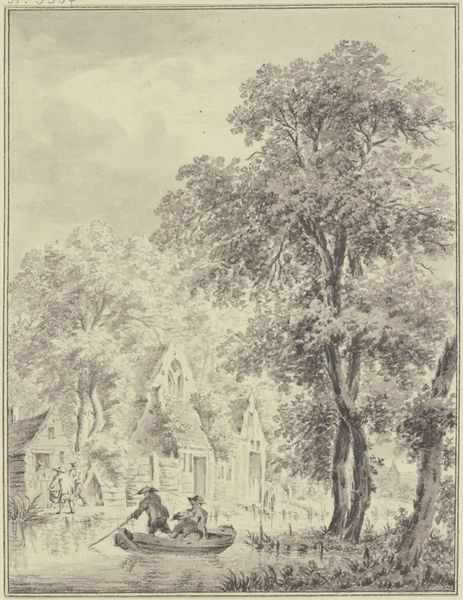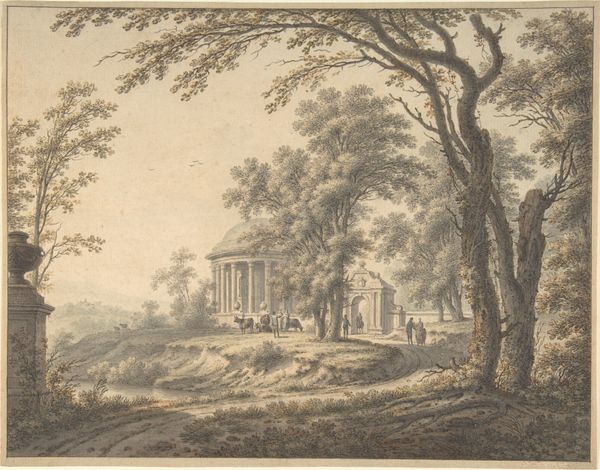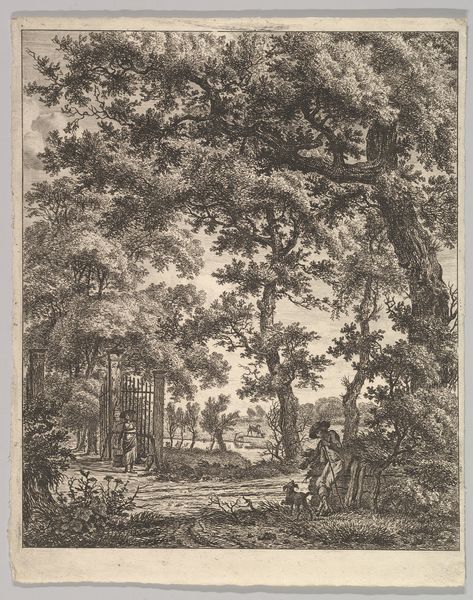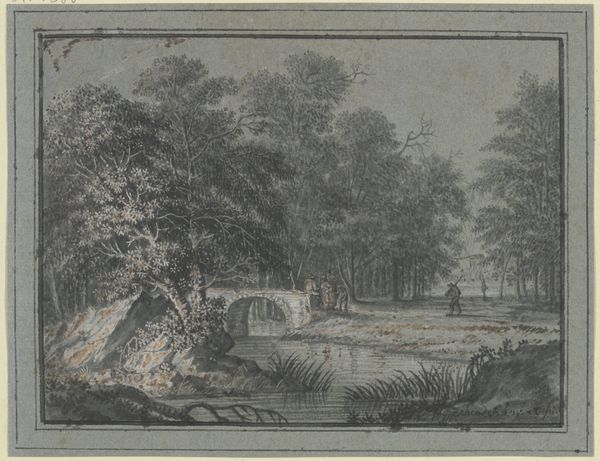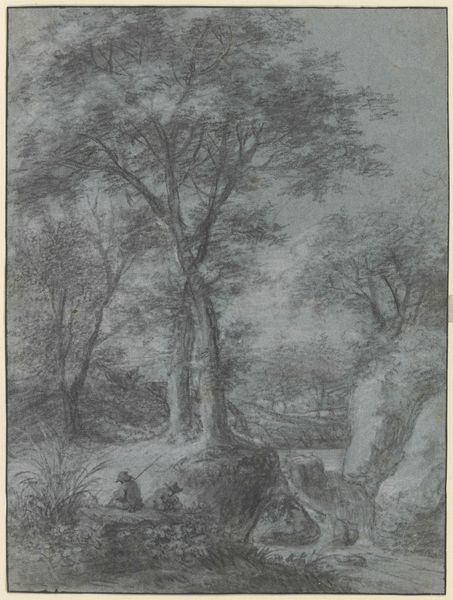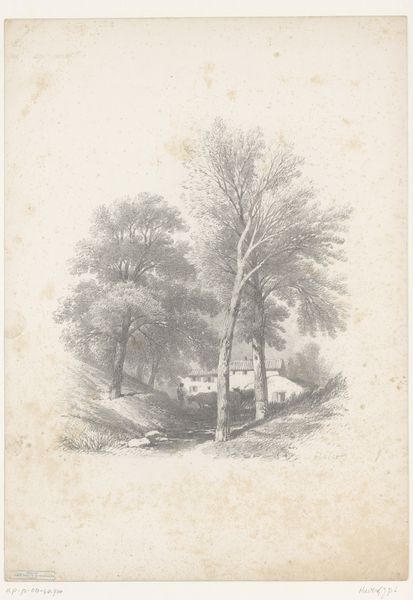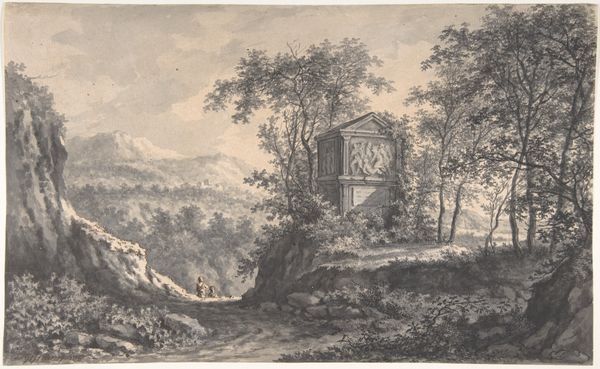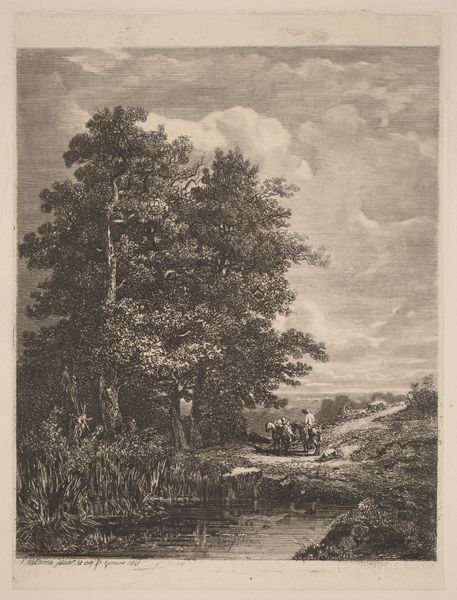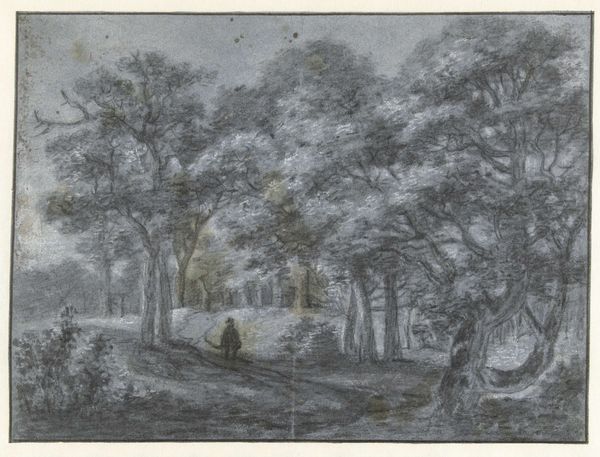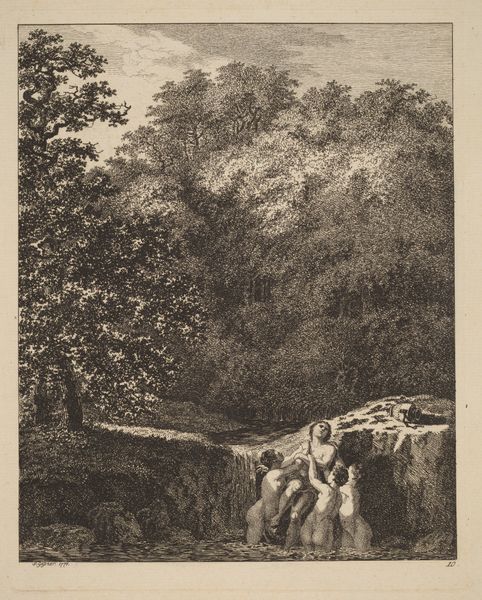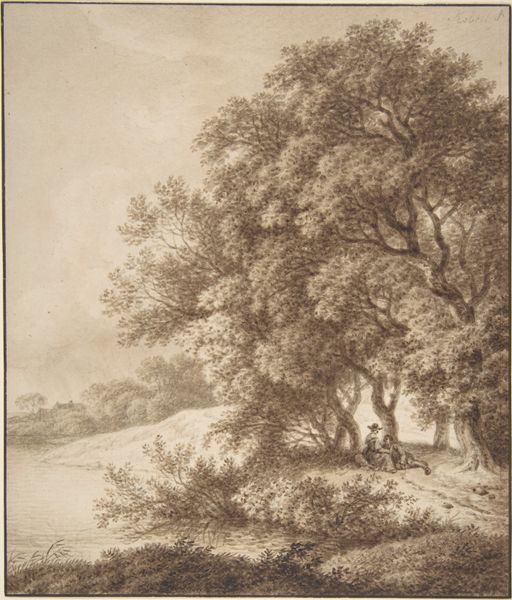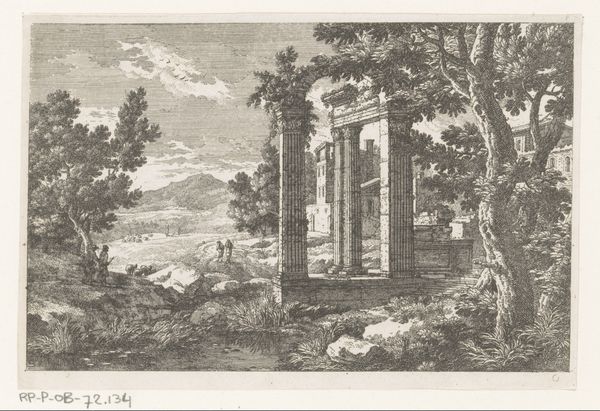
Blick durch die Bäume eines Parks auf ein klassizistisches Tempelchen
0:00
0:00
drawing, tempera, ink, pencil, graphite
#
drawing
#
tempera
#
landscape
#
etching
#
ink
#
classicism
#
romanticism
#
pen-ink sketch
#
pencil
#
graphite
Copyright: Public Domain
Curator: Let's turn our attention to this intricate drawing, "Blick durch die Bäume eines Parks auf ein klassizistisches Tempelchen" by Johann Heinrich Troll. It’s rendered with a combination of graphite, pencil, ink and tempera. Editor: Immediately, I’m struck by the image’s serene and almost melancholic quality. The temple is a ghostlike figure, softened and shrouded by nature. Curator: Absolutely. The romantic impulse to reclaim and reinterpret classical forms emerges so strongly here. What does it tell us, do you think, about shifting attitudes toward power, empire and tradition at the time? How can this shift speak to our present moment, and the need to reconsider historical narratives that have contributed to social stratification? Editor: The ruined or reclaimed temple is such a powerful symbol. Its classical architecture suggests an aspiration to order and reason, ideals we associate with the Enlightenment. However, its submersion by wild nature also signals the inevitable passage of time and the limitations of human control. It’s an emotional perspective—we know time renders things from great to small. Curator: The work challenges notions of who has access to idealized spaces and who dictates the construction and memory around these spaces. Troll places the focus not on the temple itself, but on the act of observing it—or obscuring it, which challenges us to question the assumed cultural centrality of classicism. Editor: And consider that perspective: the artist presents it to us so discreetly! The symbolism feels deeply internalized—perhaps the ruin exists more as an idea than as a literal depiction. Curator: And to that idea we might bring a certain reading informed by contemporary ecocriticism; Troll asks his audience to regard classicism anew, alongside questions of power and place and agency that still haunt conversations around the accessibility of landscapes today. Editor: What a layered image! Now when I look at the way the trees bend in deference to an unseen wind, I feel like I’m witnessing more than a simple landscape. Curator: Indeed. It resonates through shifting histories—beckoning us to view classical forms, nature, and the spaces that hold both with renewed, critical eyes.
Comments
No comments
Be the first to comment and join the conversation on the ultimate creative platform.
